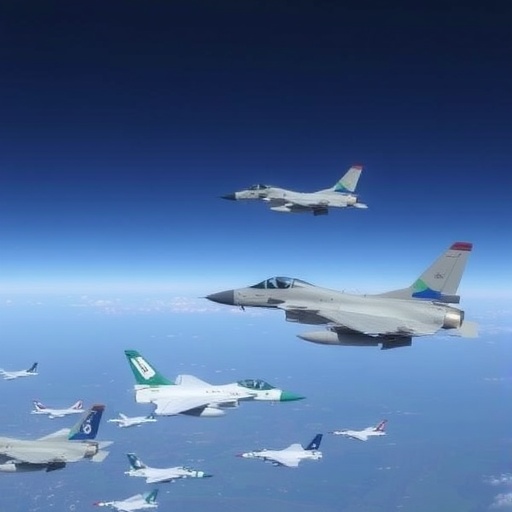France Pledges More Aster Missiles and Mirage 2000 Fighter Jets to Ukraine as Russia Conflict Intensifies
In a decisive move that could reshape the skies over Eastern Europe, French President Emmanuel Macron has announced that France will supply Ukraine with additional Aster missiles and Mirage jets, bolstering the nation’s defenses against ongoing Russian aggression. This escalation in military aid comes at a critical juncture in the war, now entering its third year, as Ukrainian forces grapple with intensified aerial assaults from Moscow.
Macron’s declaration, made during a high-stakes address in Paris on Wednesday, underscores Europe’s growing resolve to support Kyiv without direct NATO involvement. “We cannot stand idly by while sovereignty is under siege,” Macron stated, emphasizing the strategic importance of these deliveries. The announcement has sparked widespread reactions, from jubilant cheers in Ukrainian capital to stern warnings from the Kremlin, highlighting the deepening geopolitical fault lines.
Macron’s Strategic Pivot: From Diplomacy to Direct Armament
President Macron’s decision marks a significant evolution in France‘s approach to the Ukraine crisis. Initially cautious, Paris has ramped up commitments since Russia’s full-scale invasion in February 2022. This latest pledge builds on previous aid packages, including Caesar howitzers and SCALP cruise missiles, totaling over €3 billion in military support as of mid-2024.
According to French defense officials, the new deliveries are timed to counter Russia’s recent advances in the Donbas region, where Ukrainian air defenses have been stretched thin. Macron, speaking to reporters post-announcement, elaborated: “The Mirage jets and Aster missiles represent not just hardware, but a symbol of our unyielding solidarity with Ukraine.” This shift from diplomatic overtures to tangible firepower reflects broader European trends, with allies like Germany and the UK also increasing their contributions.
Historical context adds depth to this move. France, a key player in the European Union’s defense framework, has long advocated for strategic autonomy. Yet, the war has forced a reevaluation, with Macron pushing for a “European awakening” in security matters. Data from the Kiel Institute for the World Economy shows France ranking third among donors, behind only the US and UK, with commitments rising 25% year-over-year.
Critics within France argue the aid strains domestic budgets amid economic pressures, but supporters point to the long-term benefits of deterring Russian expansionism. As one analyst from the French Institute of International Relations noted, “This isn’t charity; it’s self-preservation for Europe.” The pivot also aligns with NATO’s summits, where leaders pledged to enhance Ukraine’s interoperability with Western systems.
Aster Missiles: Enhancing Ukraine’s Anti-Aircraft Arsenal
The Aster missiles, produced by MBDA—a joint Franco-Italian venture—offer Ukraine a cutting-edge boost to its air defense capabilities. These surface-to-air missiles, designed for the Aster 30 system, boast a range of up to 120 kilometers and can intercept targets at altitudes exceeding 20 kilometers. Their active radar homing ensures high precision, even in cluttered electronic warfare environments, a boon against Russia’s sophisticated jamming tactics.
Integration into Ukraine’s existing SAMP/T battery, already operational since 2023, will be swift. French military experts estimate that the additional units could neutralize up to 80% more aerial threats, based on simulations from recent exercises. “These missiles are game-changers,” said Ukrainian Defense Minister Oleksii Reznikov in a statement welcoming the aid. “They will protect our cities from the shadows of destruction.”
Statistically, Russia’s air campaign has launched over 8,000 missiles since the invasion, per Ukrainian reports, causing widespread devastation. The Aster system’s vertical launch capability allows for rapid response, firing up to 16 missiles in quick succession. Costing around €2 million per unit, the delivery includes training for Ukrainian operators, ensuring seamless deployment within months.
Beyond technical specs, the Aster missiles carry symbolic weight. Developed for naval and ground use, they’ve proven effective in real-world scenarios like protecting French carriers in the Mediterranean. For Ukraine, this means fortified skies over key infrastructure, potentially reducing civilian casualties that have topped 10,000 since 2022, according to UN figures.
Supply chain details reveal France‘s commitment: Production lines at MBDA’s Bourges facility will prioritize exports, with initial shipments slated for early 2025. This not only aids Ukraine but stimulates France‘s defense industry, employing thousands and fostering technological innovation.
Mirage 2000 Jets: Revitalizing Ukraine’s Aerial Might
At the heart of Macron’s announcement are the Mirage 2000 fighter jets, iconic multirole aircraft from Dassault Aviation. France plans to transfer up to 20 refurbished models, upgraded with modern avionics and compatible with Western munitions like the Mica air-to-air missiles. These jets, which entered service in the 1980s, remain potent with a top speed of Mach 2.2 and a combat radius of 1,500 kilometers.
For Ukraine, whose air force has suffered heavy losses—down to about 70 operational jets from 120 pre-war, per Oryx data—the Mirages fill a vital gap. Pilots will undergo intensive training in France, focusing on dogfighting and ground strikes, with simulations mirroring Russian Su-35 threats. “The Mirage jets bring experience and agility to our skies,” remarked Ukrainian Air Force commander Mykola Oleshchuk, highlighting their role in recent hypothetical drills.
The jets’ versatility shines in multi-domain operations: They can deliver precision strikes with Exocet missiles or provide close air support. Retrofitted with AESA radars, they enhance situational awareness, crucial against Russia’s superior numbers. Economically, each Mirage costs €30-40 million refurbished, a fraction of new F-35s, making the aid practical.
Contextually, this echoes France‘s past exports; Mirages have flown in conflicts from the Gulf War to Libya. For Ukraine, integration with F-16s pledged by others creates a hybrid fleet, potentially shifting air superiority dynamics. Experts predict a 30-40% increase in Ukrainian sortie rates, based on NATO modeling.
Challenges include maintenance logistics, but France promises spare parts and technician support, drawing from its own fleet of 50 active Mirages. This aid not only empowers Kyiv but reinforces France‘s position as a defense exporter, with orders surging amid global tensions.
International Ripples: NATO Unity and Russian Backlash
The announcement has reverberated across the Atlantic alliance. NATO Secretary General Jens Stoltenberg praised Macron’s initiative as “a vital step toward equitable burden-sharing,” noting it complements US ATACMS deliveries. In Brussels, EU defense ministers convened urgently, discussing pooled resources to sustain Ukraine‘s fight without depleting European stockpiles.
Ukraine‘s President Volodymyr Zelenskyy expressed gratitude via video link: “France‘s missiles and Mirage jets are lifelines for our defenders.” Conversely, Moscow’s response was predictably hostile; Foreign Minister Sergey Lavrov called it “escalatory provocation,” warning of retaliatory measures. Russian state media amplified claims of NATO aggression, though analysts see it as posturing amid domestic strains.
Broader stats underscore the stakes: The war has displaced 6 million Ukrainians and cost $500 billion in damages, per World Bank estimates. France‘s aid, part of a €50 billion EU package, aims to tip the balance. Public opinion in France is divided—polls show 55% support for military help—but Macron frames it as moral imperative.
Geopolitically, this bolsters the Western front against hybrid threats, including cyberattacks and disinformation. Collaborations with Poland and Romania for joint patrols further integrate the aid into regional security.
Future Horizons: Sustaining Support and War’s Trajectory
Looking ahead, France‘s commitment signals a long-term partnership with Ukraine. Macron hinted at potential follow-ups, including joint production of munitions and cyber defense tech, to build Kyiv’s self-reliance. Deliveries are phased: Aster missiles in Q1 2025, Mirage jets by mid-year, with evaluations to assess impact.
Implications extend to peace talks; bolstered defenses may pressure Russia toward negotiations, as suggested by think tanks like the Atlantic Council. Yet, risks persist—escalation could draw in more actors. For Ukraine, these assets promise resilience, potentially shortening the conflict’s duration by enhancing deterrence.
In Macron’s vision, this aid fortifies not just Ukraine, but Europe’s strategic posture. As the war evolves, France‘s role could define the continent’s security architecture for decades, urging allies to match Paris’s resolve in the face of adversity.









